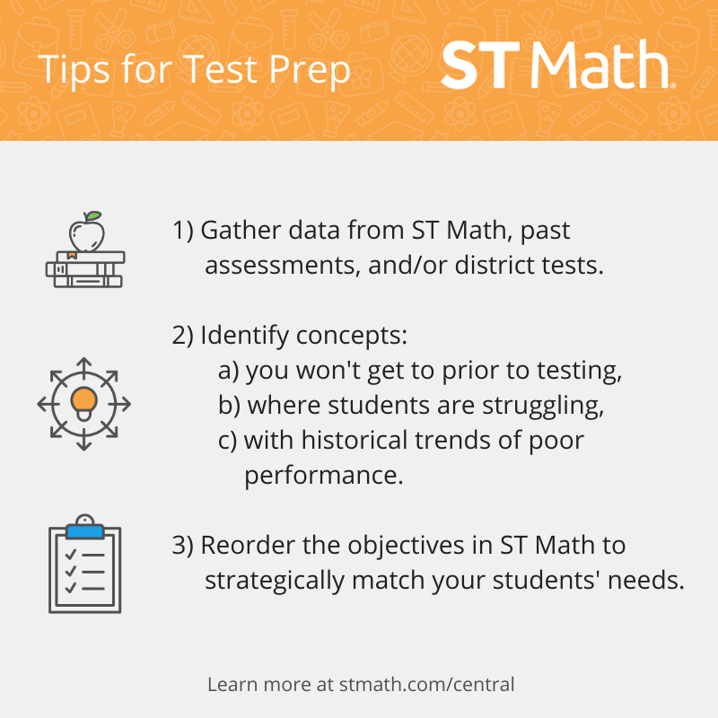It is that time of the year again when the new year reminds us that testing is just around the corner. Your students have worked hard all year and you may be looking for ideas on how to use ST Math to provide support for classroom instruction.
I have worked with teachers across the country to identify some best practices for using ST Math to support student understanding of math content. Learn how teachers are leveraging the power of ST Math to engage their students in learning all year long through small group and whole group settings.

Educators can use their students' data to strategically reorder content. Provide students opportunities to preview content before it is taught and review content needing intervention.
When reordering ST Math curriculum, use data from ST Math, past assessments, and district tests to identify:
Note: Students will pause on their current objective and begin working on the new objectives that were moved to the top. Because of this, reordering content should always be done in a manner that is strategic and beneficial to the students.
Check out ST Math Central for textbook correlations, scope and sequence, and other resources to support you with the process of reordering curriculum.
On assessments, students need to be able to clearly and precisely communicate their thinking, reason mathematically, and critique the reasoning of others.
ST Math can support mathematical discourse through:
When engaging in discourse, use Teacher Mode to pause the animation and provide opportunities for students to make conjectures, discuss problem solving strategies, and explain and justify their reasoning. Consider using game mats, game cards, and facilitation tools to support your classroom discussions.
Find more resources on ST Math Central.

Consistent play of ST Math supports the conceptual development of math content. The intrinsic motivation students develop while playing ST Math builds persistence and expands their mathematical mindsets.
Providing opportunities to help students connect what they are learning in ST Math to classroom instruction builds confidence and equips them for solving novel problems.
Use ST Math puzzles to:
Find examples of classroom connection lessons, game cards, and other resources on ST Math Central.
With strong visual models, informative feedback, and mastery-based learning, ST Math has been proven to positively impact test scores. In addition, the game-based approach helps develop students’ confidence, knowledge, strategies, and thinking about mathematical concepts and ideas. These tips are great for use all year to support students in achieving academic success.
Interested in hearing how elementary teacher Meagan Erwin uses ST Math for test prep?
Watch the recorded webinar for an in-depth look at how to help prepare your students for state tests!

Twana is Vice President of Curriculum and Instruction at MIND Research Institute. Follow her on Twitter @TwanaYoung.
Comment